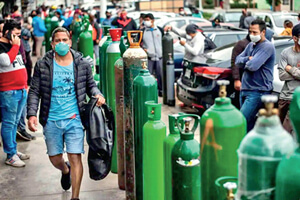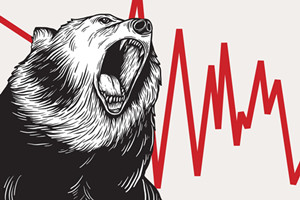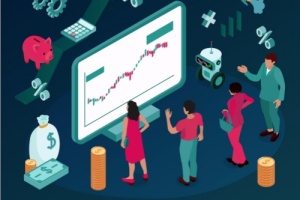What Your Breakfast Can Tell You About Inflation Worries
Narrator: Your breakfast may be getting more expensive. Across the board, Americans are paying more for food. Since last year, the cost of bacon has gone up by over 10%, 6.2% for fresh fruit and 0.2% for cereal. It may not seem like a lot, but all of these little increases add up, and it’s not just food, it’s goods and services across the economy. After years of low inflation, that hovered around 2% the consumer price index, the benchmark measure of inflation in the US, jumped 4.2% in April from the year before. These increases are often felt at the grocery store, which is why it’s affecting the price of your breakfast. This has created a lot of concern over whether higher prices are a temporary blip, or here to stay.
Jerome Powell: During this time of reopening, we are likely to see some upward pressure on prices.
Narrator: So here’s why you’re paying more for your breakfast and whether the current price jumps are a bellwether of inflation to come.
A major factor for increased food prices is corn, which has soared roughly 50% in 2021. Even if you don’t have cornflakes for breakfast, many foods have ingredients derived from the grain or come from animals who eat it. Corn makes up over 96% of all animal feed grain production in the US, and around 1/5 of the US crop is exported to other countries. Like China, right now, the country is on a corn buying binge. Farmers are racing to fatten millions of hogs to replace the pigs it had to kill during the 2020 outbreak of African swine fever. It’s expected to import about four times more corn in 2021, mostly from US farmers.
On top of that, drought in corn producing regions in south America have led to disappointing crop yields and logistical problems. In Argentina, multiple years of drought have made the Parana River too shallow for boats fully loaded with grain to pass from the country’s interior to Atlantic shipping lanes.
Simply put, the higher demand for feed corn from China and smaller supply from South America means more expensive sausage and bacon.
But that’s not all that corn is doing to raise the price for your breakfast. It’s also making it more expensive to ship food across the country. About 10% of the gasoline consumed in the United States is ethanol, which is made from corn. So the rise in price for the grain has contributed to higher gas prices, but also finding truck drivers to move the food has been difficult. Shipping demand for truck freight has risen as the economy has emerged from lockdowns. To lure new recruits, trucking companies have raised pay, further driving up the price of shipping. Kellogg’s, maker of cereal brands like Frosted Flakes, has said that higher shipping costs have contributed to it raising prices.
And those shipping problems haven’t stopped at the water’s edge. Ocean Freight has made it more expensive to ship sugar, whose price has risen over 3%. The global supply chain slowdown last year, as well as the closing of the Suez Canal in March, have backed up shipping for months.
But economists say food prices are not the best indicator for tracking inflation across the entire economy. There are a few reasons for that. According to senior Wall Street Journal economics writer, Jon Hilsenrath.
Jon Hilsenrath: It’s a very goods-oriented sector of the economy as opposed to a labor-oriented sector of the economy, like a service sector where labor costs really drive the cost of the product.
Narrator: A more telling indicator for broader inflation might be what you’re paying for that same breakfast at a restaurant. While overall food prices have jumped 2.4% from a year ago, restaurant meals have gone up 3.8%. One reason is restaurants just have more expenses. For example, takeout trays became more costly after a February winter storm knocked out plastics production in Texas.
And another reason is the increased cost of labor. Rising vaccination rates, easing lockdowns and federal stimulus aid have boosted consumer spending. Yet employers, including restaurant owners, are struggling to find workers.
As the economy has rebounded, so have wages, but participation in the labor force has flattened.
Jon Hilsenrath: You know, some people moved out of dense cities that were seen as being unsafe because of the pandemic. And so as restaurants reopen, it might be a geographic problem that there just might not be people in the place. And then we also have to think about the policy effects. So the government has thrown a lot of money at supporting workers who were affected by the pandemic. And some workers at this point might just be saying, while they’re still getting these unemployment benefits might be saying, “You know what? I don’t have to rush back to work.”
Narrator: Fast food restaurants have started to offer perks like signing bonuses and free college tuition in a bid to lower hourly workers. All this adds up to pricier meals for diners.
Jon Hilsenrath: I think most people would agree that we wanna see wages rising. Particularly for lower skill, low-income workers, when wages are rising, that means they’re better off; that means they’re bringing home bigger paychecks. What we don’t want to see is wage increases paired together with inflation increases that start feeding on each other and leave workers actually worse off and not better off.
Narrator: This effect, known as a wage price spiral, contributed to the high inflation of the 1970s, but will history repeat itself? The Federal Reserve, for its part, has said prices will correct as supply and demand forces even out.
Jerome Powell: These one-time increases in prices are likely to…to have only transitory effects on inflation.
Narrator: For now, indicators that measure expectations of inflation, like treasury bond yields, remain low, suggesting people expect inflation to be modest, at least in the near term. So for now, consumers will have to adjust to some rising prices for their breakfast, whether at home or at the diner, just don’t forget to include the tip.















